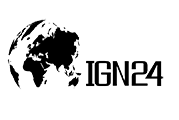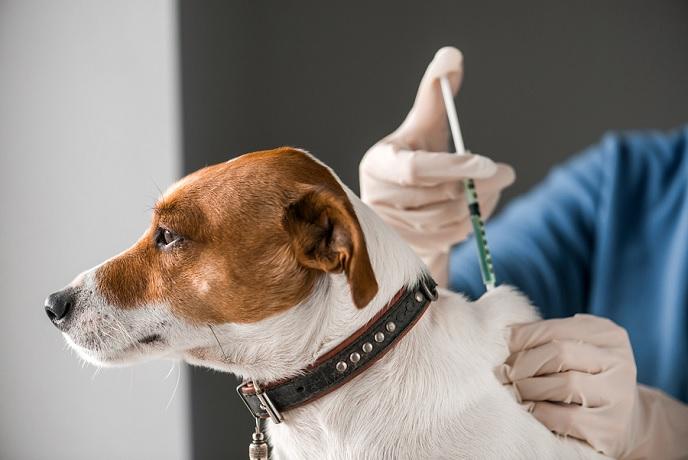According to the American Veterinary Medical Association (AVMA), nearly 1 in 4 dogs develop neoplasia during their lifetime. AVMA also reports nearly half the dogs over the age of 10 develop cancer, mimicking their human brethren in high rates of cancer incidences. Furthermore, the rates of cancer incidences among cats are estimated to be underreported. Many experts believe that worsening environment and lifestyle conditions are responsible for high rates of cancer incidences among humans and pets alike. These are leading to high occurrences of conditions like skin cancer among pets and people alike. Stringent testing necessities like biopsy samples and heavy-costs associated with pet-cancer treatment turn pet owners away for treatment. High cancer incidences, growing awareness, and availability of effective detection methods like PET scans are anticipated to drive major growth of the global pet cancer therapeutics market over the forecast period.
Request for Sample Copy of This Report@ https://www.absolutemarketsinsights.com/request_sample.php?id=160
Large Pet Ownership in North America to Remain Major Growth Driver
According to the North American Pet Products Association, nearly 70% households in North America own a pet. Moreover, the spending on pet products continues to rise at a healthy 4% per year. This spending also forms a major chunk of total global spending as it rose from $66.75 billion in 2016, to reach $70 billion in 2019. Additionally, growing number of Americans are turning to insurance to take care of their pets. For example, in 2018, pet insurance reached an all-time high number of 2.16 million pets in the United States. This number rose 18% over the previous year. Furthermore, the average lifespan covered with pet insurance also remains significantly high. While dogs are insured for 4.58 years on average, cats are insured for 5.51 years on average. Due to low disposable income, insurance remains the only medium to take robust care of pets. Furthermore, the average cost of pet insurance remains relatively low. For example, in 2019, the average cost of pet insurance for dogs was $48.78 per month, while $29.16 for cats. Rising insurance purchases, growing awareness about cancer incidences among pet owners, and large population of pets in regions like North America presents major opportunities for growth for players in the global pet cancer therapeutics market.
Growing Trend of Neutering and Spaying Pets to Increase Cancer Incidences
To stop pets from reproducing, most owners in the U.S. undertake medical procedures like neutering, and spaying. It is estimated 85% of dogs in the U.S. have been neutered, while 75 to 80 million pet cats, or around 80% of the cats have been spayed. Growing research shows that while neutering, and spaying increases the average lifespan for cats, and dogs, it also leads to increased risk of cancers. Neutering and spaying increases the risk for bone, bladder, haematologic tumors among cats and dogs. Furthermore, research has also established that neutering and spaying leads to an increase in cancer-associated factors like obesity, and musculoskeletal conditions among others. While spaying, and neutering does reduce risks like mammary cancer among dogs, research concludes that it puts other body parts at risk. Furthermore, growing evidence also points to genetic predisposition among some breeds for cancer. These genes tend to affect some of the most popular species in the US including golden retriever, mountain dog, boxers, bernese mountain dog, rottweilers, among others. Golden retriever is currently the 4th most popular dog in American homes, and without insurance can lead to hefty bills for cancer treatments. Hence, the growing trend of neutering and spaying pets along with growing awareness about cancer, and genetic predisposition is likely to drive major growth for the global pet cancer therapeutics market over the period of next eight years.
Enquiry Before Buying @ https://www.absolutemarketsinsights.com/enquiry_before_buying.php?id=160
Horses Represent a New Horizon for Cancer Testing and Animal Welfare
According to the American Horse Council estimates, there are over 7.2 million horses in the United States. Horses continue to remain an important source of recreation, racing hobbies, and farm work for a large American demographics. The council estimates that in 2017, horses made a direct contribution of $122 billion to the U.S. economy, and led 1.7 million employment generation in the same year. This information is highly important for players in the global pet cancer therapeutics market. Horses exhibit a very high incidence rates of cancer, upto 31.4% on average among Camargue-type horses. Furthermore, the incidence rates rises to 67% in horses over 15 years of age. According to a study from University of Maine, the average cost of maintaining a horse for recreational use can vary from $2,419 to $3,876 per month on par with car payments. Furthermore, there are over 3 million horses owned in just the U.S. for recreational use. The notable willingness of horse owners to pay more, and high prevalence of cancer incidences among horses, and high occurrence rate of easily detectable skin cancers is likely to drive major growth for companies operating in the global pet cancer therapeutics market.
Growing Innovation in Veterinary Medicine to Create New Opportunities for Growth
Growing research continues to pave new ways to treat pets effectively. For example, today there is animal vaccine that protects pets from oral melanomas, the most common oral tumor. Furthermore, therapy treatments like chemotherapy, and radiation therapy are undergoing major advancements, owing to growing interest in cancer research for humans. Additionally, technology available today enables veterinarians to operate on delicate organs of pets like brains, promising a growing efficacy for brain tumors, and nasal tumors. Earlier, these areas were out of bounds for health professionals, due to the deep-seated nature of several tumors. The growing awareness about cancer incidences among pets, and rising availability of treatment options are likely to open new channels for growth for players in the global pet cancer therapeutics market. The high misconceptions among owners about quality of life for pets - post treatment like chemotherapy remains a major restraint for growth in the global pet cancer therapeutics market. Studies show that many pet owners make erroneous assumptions that post-chemotherapy their pets are likely to be less active, play less, and sleep more, reducing their quality of life.
Request for Customization@ https://www.absolutemarketsinsights.com/request_for_customization.php?id=160
The Global Pet Cancer Therapeutics Market Report is segmented as below:
- By Animal Type
- Dogs
- Cats
- Horses
- Others
- By Cancer Type
- Mast Cell Cancer
- Lymphoma
- Melanoma
- Mammary
- Squamous Cell Cancer
- Others
- By Route of Administration
- Oral
- Intravenous
- Others
- By Therapy Type
- Chemotherapy
- Targeted Therapy
- Combination Therapy
- Immunotherapy
- By Region:
- North America
- U.S.
- Canada
- Mexico
- Rest of North America
- Europe
- France
- The UK
- Spain
- Germany
- Italy
- Nordic Countries
- Denmark
- Finland
- Iceland
- Sweden
- Norway
- Benelux Union
- Belgium
- The Netherlands
- Luxembourg
- Rest of Europe
- Asia Pacific
- China
- Japan
- India
- New Zealand
- Australia
- South Korea
- Southeast Asia
- Indonesia
- Thailand
- Malaysia
- Singapore
- Rest of Southeast Asia
- Rest of Asia Pacific
- Middle East & Africa
- Saudi Arabia
- UAE
- Egypt
- Kuwait
- South Africa
- Rest of Middle East & Africa
- Latin America
- Brazil
- Argentina
- Rest of Latin America
- North America
Get Full Information of this premium report@ https://www.absolutemarketsinsights.com/reports/Pet-Cancer-Therapeutics-Market-2019-2027-160
About Us:
Absolute Markets Insights strives to be your main man in your business resolve by giving you insight into your products, market, marketing, competitors, and customers. Visit …
Contact Us:
Email id: [email protected]
Contact Name: Shreyas Tanna
Phone: +91-740-024-2424

